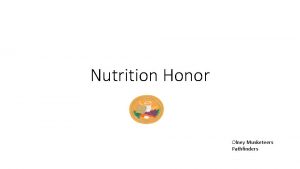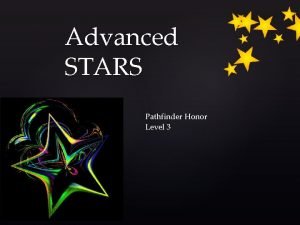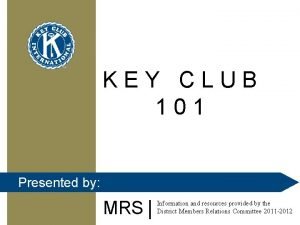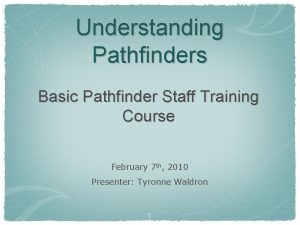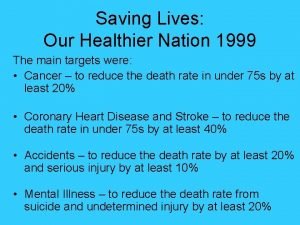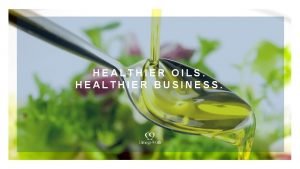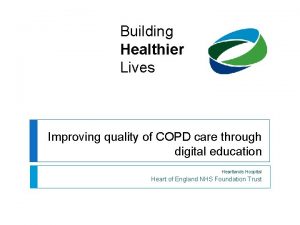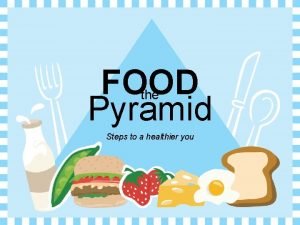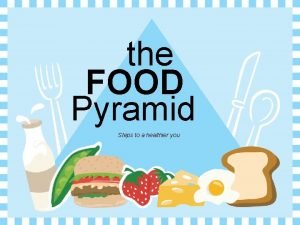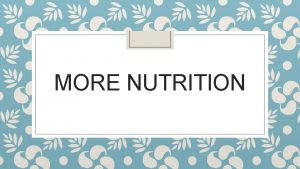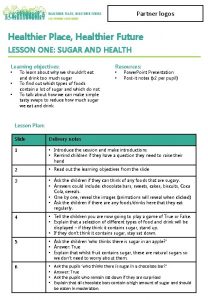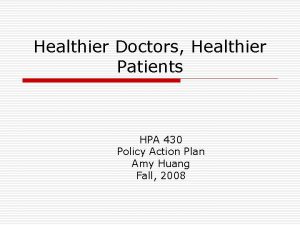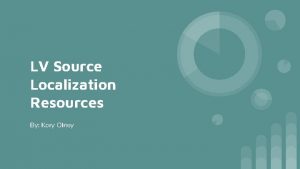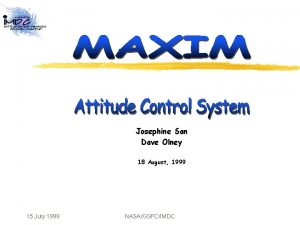Nutrition Honor Olney Musketeers Pathfinders Which is Healthier

















- Slides: 17

Nutrition Honor Olney Musketeers Pathfinders

Which is Healthier?

Nutrition Labels

Nutrition Labels

Flour (Bread) Whole Wheat Flour Bleached Flour Enriched Flour

Healthy Plate Sample Servings for a 2000 Calorie Diet. • 2 cups of Fruit • 2½ cups from the Vegetable • 6 ounces of Grains • 5½ ounces of Protein Foods • 3 cups of Dairy Group

What are different types of Vegetarians? • Lacto-ovo vegetarian • Ovo vegetarian • Vegan vegetarian

What are different types of Vegetarians? • Lacto-ovo vegetarian A lacto-ovo vegetarian is a person who eats no animal products (such as meat) except for milk (and milk products such as cheese, ice cream, and yogurt), and eggs. Lacto (think lactose intolerant) and Ovo (think oval like an egg) • Ovo vegetarian An ovo vegetarian is a person who eats no animal products (not meat and not milk) except for eggs. • Vegan vegetarian A vegan is a vegetarian who eats no animal products at all.

What is another name for Vitamin B 1 and B 2? • Vitamin B 1 is also known as thiamine. Beriberi is disease cause by a vitamin B 1 deficiency. • Vitamin B 2 is also known as riboflavin. It is required for red blood cell formation.

List at least three significant food sources of the following nutrients: • Vitamin C Citrus fruits (lime, lemon, orange, grapefruit), tomatoes, and potatoes are good common sources of vitamin C. Other foods that are good sources of vitamin C include papaya, broccoli, brussels sprouts, black currants, strawberries, cauliflower, spinach, cantaloupe, and kiwifruit. Also, cranberries and red peppers are good sources of the vitamin. • Vitamin A Milk and eggs are both animal sources of vitamin A. Carrots and spinach are both good plant sources of vitamin A. • Vitamin B 1 Good sources of vitamin B 1 include whole grains (wheat, oats, rice, etc. ), apricots, pineapples, legumes, turnip greens, and pistachio nuts.

List at least three significant food sources of the following nutrients: • Vitamin B 2 Milk, cheese, leafy green vegetables, liver, yeast, almonds and mature soybeans are good sources of Vitamin B 2, but exposure to light will destroy the riboflavin in these natural sources. • Iron Good sources of dietary iron include meat, fish, poultry, lentils, beans, leaf vegetables, tofu, chickpeas, black-eyed pea, strawberries and farina. • Calcium Dairy products, such as milk and cheese, are a well-known source of calcium. However, some individuals are allergic to dairy and even more people, particularly those of non-European descent, are lactose-intolerant, leaving them unable to consume dairy. Fortunately, many other good sources of calcium exist. This includes nuts and seeds (like almonds and sesame), beans; whole wheat; collard greens; okra; rutabaga; broccoli; and fortified products such as orange juice and bread.

Why is it important to drink plenty of water every day? How much water should you drink every day? • It is important to drink plenty of water so that you do not get dehydrated. Your body needs water to help eliminate waste and to keep the cells in the body hydrated. • You should drink water whenever you are thirsty. A persistent myth is that a person needs to drink 8 eight-ounce glasses of water every day. While following this rule will cause no harm, it is completely unsupported by scientific evidence. A person should replace the same amount of water he or she loses in a day. Water is lost through urination, bowel elimination, sweating, and breathing. Remember that drinking is not the only way to replace lost water: food contains a lot of water, and your body can absorb water through the skin. Again, the general rule is to drink water whenever you are thirsty or whenever you want some.

Name three common diseases that can be controlled by diet. • Diabetes: The most important forms of diabetes are due to decreased or the complete absence of the production of insulin (type 1 diabetes), or decreased sensitivity of body tissues to insulin (type 2 diabetes, the more common form). The former requires insulin injections for survival; the latter is generally managed with diet, weight reduction and exercise in about 20% of cases, though the majority require these strategies plus oral medication (insulin is used if the tablets are ineffective). • Cardiovascular Disease: Attempts to prevent cardiovascular disease take the form of modifying risk factors. Some, such as gender, age, and family history, cannot be modified. Smoking cessation (or abstinence) is one of the most effective and easily modifiable changes. Also important is a low-fat, low-calorie diet, which helps one to maintain a healthy body mass index (BMI) and preventing obesity. Regular cardiovascular exercise (aerobic exercise) complements the healthful eating habits. Sometimes, the combination of diet and exercise will improve lipoprotein (cholesterol) levels; if not, a physician may prescribe "cholesterol-lowering" drugs, such as the statins. Treatment of cardiovascular disease depends on the specific form of the disease in each patient, but effective treatment always includes preventative lifestyle changes discussed above. Medications, such as blood pressure reducing medications, aspirin and other treatments may be involved. • Cancer: The consensus on diet and cancer is that obesity increases the risk of developing cancer. Particular dietary practices often explain differences in cancer incidence in different countries (e. g. gastric cancer is more common in Japan, while colon cancer is more common in the United States). Studies have shown that immigrants develop the risk of their new country, suggesting a link between diet and cancer rather than a genetic basis.

What is the difference between whole wheat flour and white flour, and which one has the higher nutritive value? ¼ Cup Whole Wheat Flour ¼ Cup White Flour • Dietary fiber 3 g fiber • glycemic index of 51 • Higher Vitamin Count Example: Niacin 1. 5 mg Iron 1. 1 mg Calcium 10 mg Potassium 110 mg • 1/2 cup flour contains 1 g fiber • glycemic index of 71 • Lower Vitamin Count Example: Niacin 0. 4 mg Iron 0 mg Calcium 4 mg Potassium 30 mg

What does Dietary Reference Intake mean? The daily dietary intake level of a nutrient that is considered sufficient to meet the requirements of nearly all (97 -98%) healthy individuals in each life-stage and gender group. These are established by the Food and Nutrition Board of the (US) National Academy of Sciences.

Why is it important not to take excessive amounts of some vitamins and minerals? • Fat-soluble vitamins may be stored in the body and can cause toxicity when taken in excess. Water-soluble vitamins are not stored in the body, with the exception of Vitamin B 12, which is stored in the liver. • Some of the most common causes of vitamin poisoning are vitamins A, B 3 and B 6. Conversely, certain vitamins do not produce toxicity in excess levels: vitamin C has been used in clinical trials in dosages over 100, 000 mg — over 1, 000 times the daily recommended intake — without ill effects. • Excess doses of mineral supplements can also lead to poisoning. Either or both of vitamin poisoning and mineral supplement poisoning can occur due to excessive intake of multivitamin supplements.

Plan a two-day menu, containing a balanced lacto-ovo vegetarian diet. USDA Food Pyramid Food Group Grains 10 year-old Male 7 oz Vegetables 3 cups Fruits 2 cups Milk 3 cups Meat & Beans 6 ounces 10 year-old Female 6 oz 2. 5 cups 2 cups 3 cups 5. 5 ounces 11 year-old Male 3 cups 2 cups 3 cups 6 ounces 11 year-old Female 6 oz 2. 5 cups 2 cups 3 cups 5. 5 ounces 12 year-old Male 8 oz 3 cups 2 cups 3 cups 6. 5 ounces 12 year-old Female 7 oz 3 cups 2 cups 3 cups 6 ounces 13 year-old Male 3. 5 cups 2 cups 3 cups 6. 5 ounces 13 year-old Female 7 oz 3 cups 2 cups 3 cups 6 ounces 14 year-old Male 3. 5 cups 2. 5 cups 3 cups 7 ounces 14 year-old Female 8 oz 3 cups 2 cups 3 cups 6. 5 ounces 15 year-old Male 5 cups 2. 5 cups 3 cups 7 ounces 3 cups 2 cups 3 cups 6. 5 ounces 7 oz 9 oz 10 oz 15 year-old Female 8 oz Choosemyplate. gov
 Nutrition pathfinder honor
Nutrition pathfinder honor How to reach honor level 3
How to reach honor level 3 Olney weather radar
Olney weather radar Key club mrf
Key club mrf Understanding pathfinders
Understanding pathfinders Buc pathfinders
Buc pathfinders God's covenant
God's covenant 3 musketeers aesthetic
3 musketeers aesthetic Musketeers of the guard
Musketeers of the guard Four musketeers program in c++
Four musketeers program in c++ The three musketeers and the queens diamond gratis
The three musketeers and the queens diamond gratis Our healthier nation 1999
Our healthier nation 1999 Healthier lancashire and south cumbria
Healthier lancashire and south cumbria Healthier business group
Healthier business group Building healthier lives
Building healthier lives Mypyramid steps to a healthier you
Mypyramid steps to a healthier you Mypyramid steps to a healthier you
Mypyramid steps to a healthier you World war 2
World war 2
